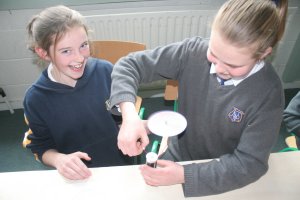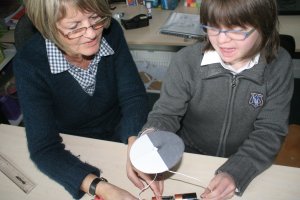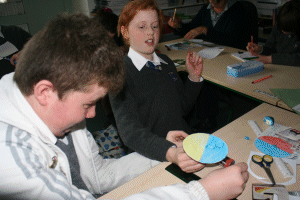Isaac Newton's Scientific Investigations 1. Newton's First Law of Motion (1) | 2. Newton's First Law of Motion (2) | 3. Newton's Third Law of Motion | 4. Newton's Colour Wheel 5. Balancing Butterfly | 6. The Floating Balloon Newton's Colour Wheel
Experiment:
To demonstrate Isaac
Newton's Famous Colour Wheel
Materials:
You will need:
Card
What you have to do:
1) With your pencil, draw a circle
around a CD or with a compass. 2) Divide the circle into seven (the
seven colours that make up light) and draw seven angles (approx. 52º
each) 3) With a compass, poke a hole in your colour wheel and mount it
on to your motor. 4) Connect the two batteries to your motor.
Continuation: We decided to see what would happen if we only filled our disk with two or three colours. Would the colours mix like paint? Would yellow and red, for example, produce orange when spun at high speed? Take a look at the following photos.
Sixth 1. Newton's First Law of Motion (1) | 2. Newton's First Law of Motion (2) | 3. Newton's Third Law of Motion | 4. Newton's Colour Wheel | |||||

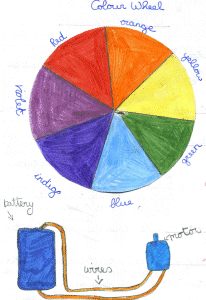
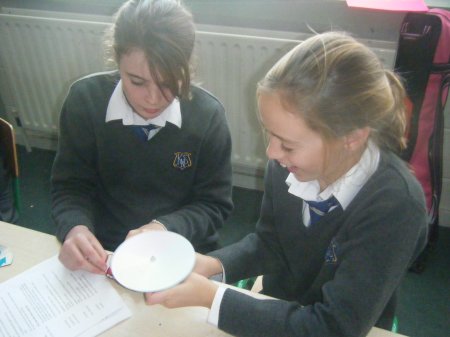 Method:
Method:
